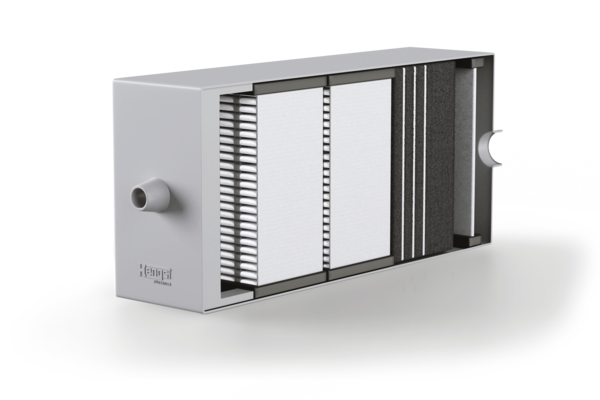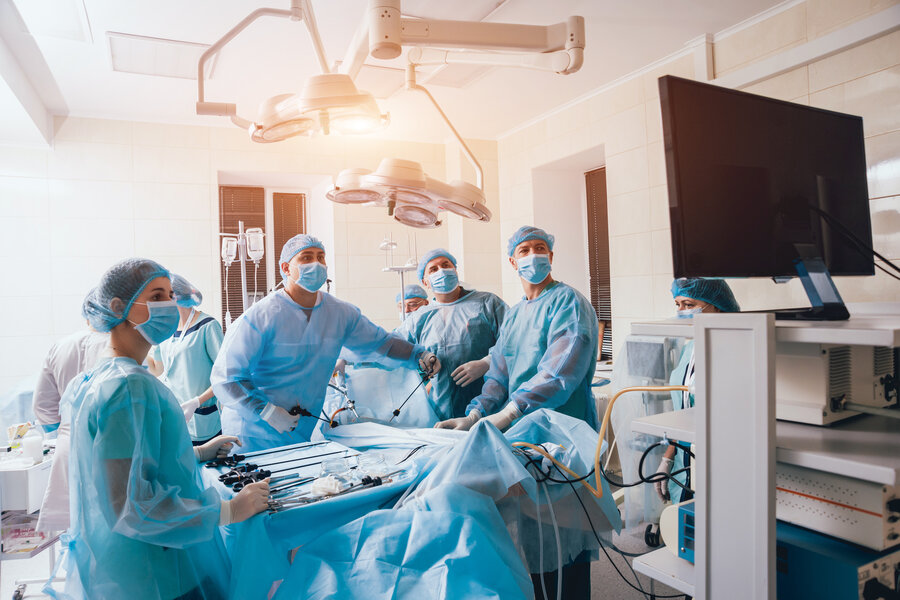Minimal incisions and bleeding, gentle procedures, shorter operating times: the advantages of electrosurgery and minimally invasive techniques are well known and proven. In almost every operating room in the world, there is a high-frequency surgical unit used to perform these types of procedures. However, in electrosurgery in particular, there is a side effect from which the personnel must be especially protected.
This is because the thermal destruction of tissue produces smoke during operations with a laser or electrosurgical unit. And this affects about 90 percent of all surgical procedures: including common operations such as cesarean sections, appendectomies, gall bladder removals or joint replacements. And this smoke is not only unpleasant, but also dangerous, as it can contain toxic gases and vapors such as benzene, hydrogen cyanide, formaldehyde, or even viruses and bacteria.
On the one hand, this smoke has an unpleasant odor, and on the other, it irritates the upper respiratory tract and eyes of operating room personnel and can even cause visual disturbances. And that we are talking about a really big problem here is made clear by one figure alone: 1,200,000
In Europe, around 1.2 million OR professionals are exposed to surgical smoke.
That's 1.2 million people who need to be protected in their daily work to prevent long-term damage1. Because even now, OR nurses report respiratory problems twice as often as the general population.
The daily exposure to surgical smoke for OR staff is equivalent to inhaling the smoke from an average of 27 to 30 unfiltered cigarettes. We want to prevent this with our filtration solutions and protect the much-needed healthcare personnel.

Dr. Sebastian Stühle
Head of Healthcare Business Unit at Hengst Filtration
27 to 30 unfiltered cigarettes a day, an extremely high number. This makes it all the more important to actively protect OR staff and patients from the smoke. The surgical mask used, like an FFP2 mask, is not sufficient protection on its own, since an FFP2 mask only filters particles such as viruses and bacteria, but not gases such as benzene. A room ventilation system is also not sufficient: Smoke must be captured where it is generated.
This is best done with a smoke evacuator and an effective filter – at least to HEPA standard (High Efficiency Particulate Air), whose inlet is as close as possible to the surgical site or smoke source. An adsorber made of activated carbon for odor reduction is also recommended.
We provide a safe and smoke-free environment for healthcare staff and patients
As filtration specialists, we at Hengst Filtration are dedicated to effectively cleaning and keeping the air in operating rooms clean as well. That's why we worked with one of our customers to develop the filtration concept for a five-stage smoke filter for electrosurgery.
Here, we can reliably filter out up to the ULPA-16 standard 99.99995 % of all particles down to a size of 0.1 μm. To protect staff and patients, the input and output air is effectively filtered of viruses, bacteria and harmful gases during near-patient procedures. In addition, the high-performance filters can be equipped in accordance with DIN EN 1822 to EPA, HEPA or ULPA standards, for example with activated carbon media for pollutant gas adsorption and special membrane technology for moisture separation.
Effective filtration, good air, comprehensive protection for people in the operating room. So that operating room staff can concentrate on the really important things: Patient treatment and recovery.
If you would like to know more about our smoke filters, please contact our colleague Frank Wübben:


Sources
OSHA (Occupational Safety and Health Administration, USA): Laser/Electrosurgery Plume, https://www.osha.gov/SLTC/laserelectrosurgeryplume/index.html, 1.3.2019
Hill DS, O'Neill JK, Powell RJ, Oliver DW. Surgical smoke - a health hazard in the operating theatre: a study to quantify exposure and a survey of the use of smoke extractor systems in UK plastic surgery units. J Plast Reconstr Aesthet Surg. 2012 Jul;65(7):911-6. doi: 10.1016/j.bjps.2012.02.012. Epub 2012 Mar 23. PMID: 22445358.

